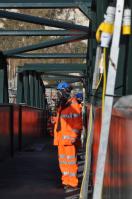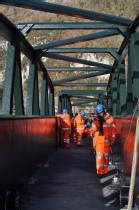Truss footbridge over a railway line
This truss structure over a railway line in England was designed and installed by Pipex px in January 2017. It has two spans, each 14.5m long. The bridge is a part of a reconstruction of the Dover Seawall which collapsed during storms in 2015. FRP composite material was chosen due to its good performance in aggressive (seawater) environments. Figure 1 shows photos of the bridge and the railway line.
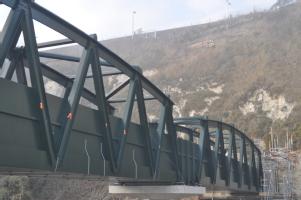 |
Figure 1 |
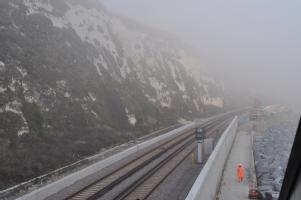 |
Modal testing
Impact hammer testing was employed to measure frequency response functions (FRFs) of the structure from which the dynamic properties were determined. The tests were completed both in the factory and on site, in collaboration with Pipex px. The resulting vibration modes were quite similar for the two condition; the main difference being in the appearance of additional horizontal-lateral modes on site, due to effects of piers.
The first horizontal-lateral mode identified on site has a natural frequency of 3.6Hz and damping ratio of 0.8%. The first vertical flexural mode is at 15.1Hz and it has damping ratio of 1.4%. The bridge is therefore quite stiff in both directions, ensuring good vibration behaviour.
Crowd and train measurements
The vibration response of the structure was monitored under crowd loading as well as due to 19 trains that passed under the bridge during the testing days. The aim was to determine whether crowds of pedestrians can generate perceptible vibration response of the structure and establish if the trains cause buffeting. These findings are being reported in a journal paper that is currently under review.
Publications
- Russell, J., Wei, X., Zivanovic, S. and Kruger, C. (2017) Dynamic Response of an FRP Footbridge Due to Pedestrians and Train Buffeting. EURODYN 2017, Rome, Italy, 10 - 13 September.
Photo Gallery
 Data acquisition |
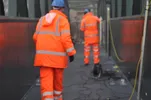 Test preparation |
|
|
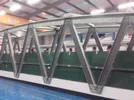 Crowd test |

